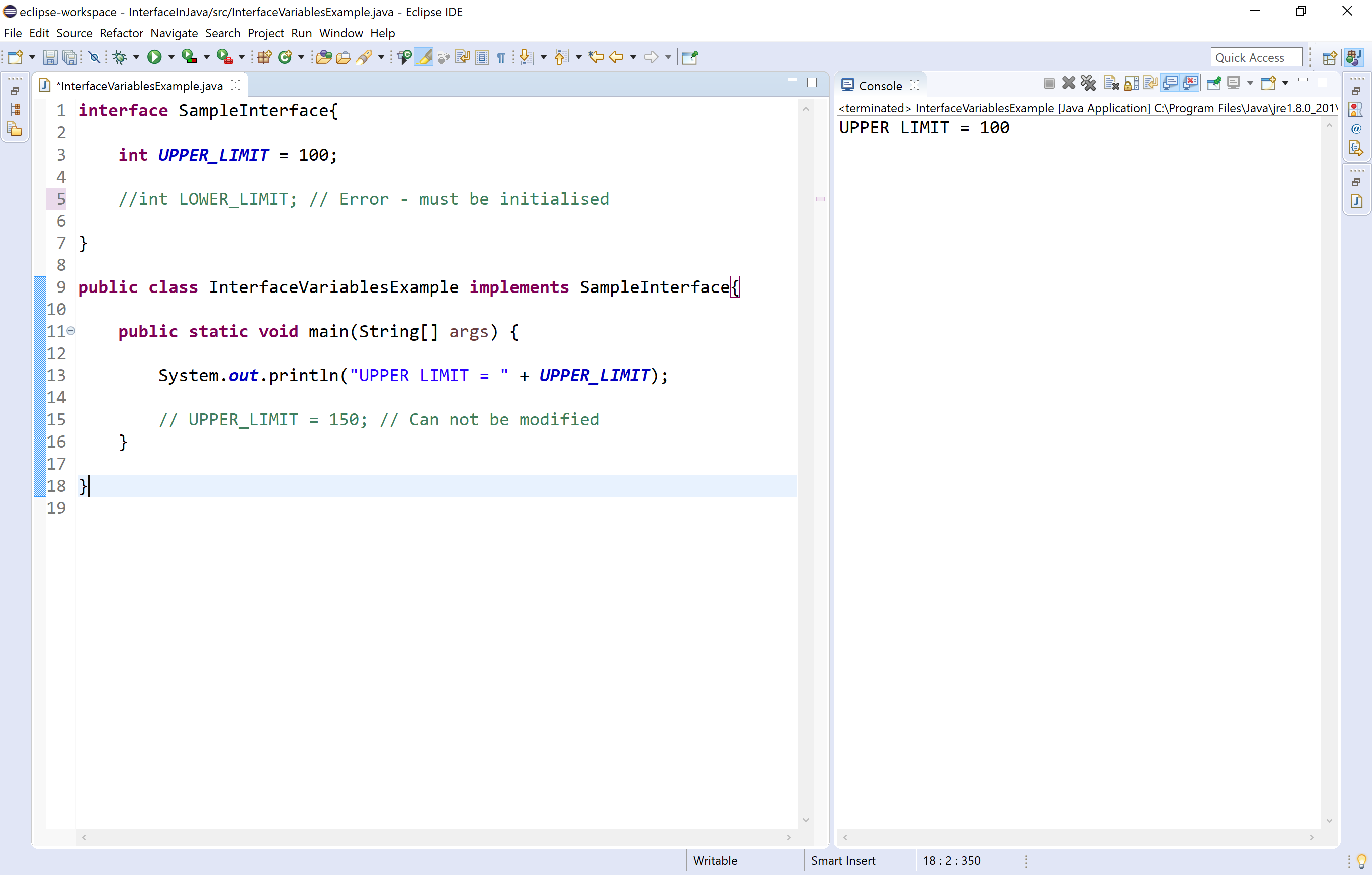

It includes a group of abstract methods (methods without a body). This class is a specialization of java.io.An interface is a fully abstract class. Since Java 8, you can also create default methods. The open() method on FileSystem actually returns an FSDataInputStream rather than a standard java.io class. Interface in Java is a bit like the Class, but with a significant difference: an interface can only have method signatures, fields and default methods. Public abstract FSDataInputStream open(Path f, int bufferSize) throws IOException A Java interface contains static constants and abstract methods. An interface in Java is a blueprint of a class. Public FSDataInputStream open(Path f) throws IOException An Interface in Java programming language is defined as an abstract type used to specify the behavior of a class. With a FileSystem instance in hand, we invoke an open() method to get the input stream for a file.The first method uses a default buffer size of 4 KB.The second one gives an option to user to specify the buffer size. The third retrieves the filesystem as the given user, which is important in the context of security.The fourth one retrieves a local filesystem instance. The second uses the given URI’s scheme and authority to determine the filesystem to use, falling back to the default filesystem if no scheme is specified in the given URI. The first method returns the default filesystem (as specified in core-site.xml, or the default local filesystem if not specified there). Public static LocalFileSystem getLocal(Configuration conf) throws IOExceptionĪ Configuration object encapsulates a client or server’s configuration, which is set using configuration files read from the classpath, such as core-site.xml. Public static FileSystem get(URI uri, Configuration conf, String user) throws IOException Public static FileSystem get(URI uri, Configuration conf) throws IOException Public static FileSystem get(Configuration conf) throws IOException The reason we have default methods in interfaces is to allow the developers to add new. Java 8 allows the interfaces to have default and static methods. All the methods of interfaces are public & abstract by default.


Prior to java 8, interface in java can only have abstract methods. There are several static factory methods for getting a FileSystem instance Java 8 Interface Changes default method and static method. FileSystem is a general filesystem API, so the first step is to retrieve an instance for the filesystem we want to use-HDFS, in this case. Reading Data Using the FileSystem APIĪ file in a Hadoop filesystem is represented by a Hadoop Path object. In this section, we dig into the Hadoop FileSystem class: the API for interacting with one of Hadoop’s filesystems. The HttpFS proxy is started independently of the namenode and datanode daemons, using the httpfs.sh script, and by default listens on a different port number 14000. The HttpFS proxy exposes the same HTTP (and HTTPS) interface as WebHDFS, so clients can access both using webhdfs (or swebhdfs) URIs. This allows for stricter firewall and bandwidth-limiting policies to be put in place. All traffic to the cluster passes through the proxy, so the client never accesses the namenode or datanode directly. The second way of accessing HDFS over HTTP relies on one or more standalone proxy servers. (WebHDFS is enabled by default, since is set to true.) File metadata operations are handled by the namenode, while file read (and write) operations are sent first to the namenode, which sends an HTTP redirect to the client indicating the datanode to stream file data from (or to). In the first case, the embedded web servers in the namenode and datanodes act as WebHDFS endpoints. There are two ways of accessing HDFS over HTTP: directly, where the HDFS daemons serve HTTP requests to clients and via a proxy, which accesses HDFS on the client’s behalf using the usual DistributedFileSystem API. Note that the HTTP interface is slower than the native Java client, so should be avoided for very large data transfers if possible. The HTTP REST API exposed by the WebHDFS protocol makes it easier for other languages to interact with HDFS. The filesystem shell, for example, is a Java application that uses the Java FileSystem class to provide filesystem operations.By exposing its filesystem interface as a Java API, Hadoop makes it awkward for non-Java applications to access HDFS. The Java abstract class .FileSystem represents the client interface to a filesystem in Hadoop, and there are several concrete implementations.Hadoop is written in Java, so most Hadoop filesystem interactions are mediated through the Java API. Hadoop has an abstract notion of filesystems, of which HDFS is just one implementation.


 0 kommentar(er)
0 kommentar(er)
